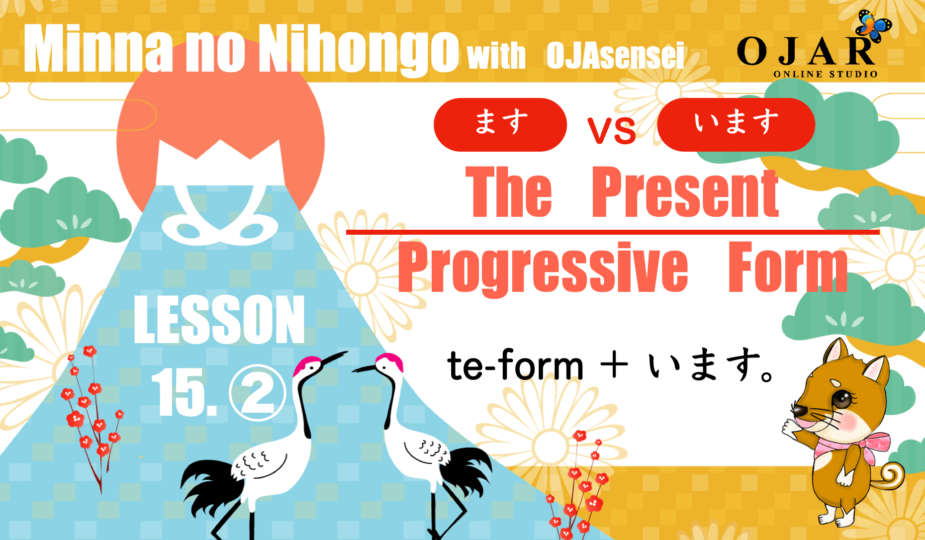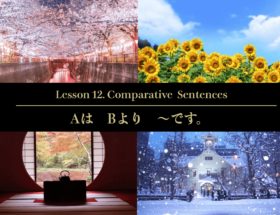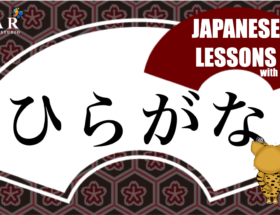こんにちは、みなさん おじゃちゃんです。
Today is “Minna no Nihongo lesson 15 ② : The Present Progressive Form “te-form + imasu”. Do you know the difference between “勉強します” and “勉強しています”? You can express the current situations and continuous actions with “te-form + います”. I’m going to tell you the expressions with “te-form” which we learned previous lesson!
Let’s get started!
Minna No Nihongo: Beginner 1, 2nd Edition (Japanese)
Customer Reviews:★★★★☆
Publisher : 3A CORPORATION; 2nd Edition (March 16, 1998)
CONTENTS
■ What is te-form + imasu?
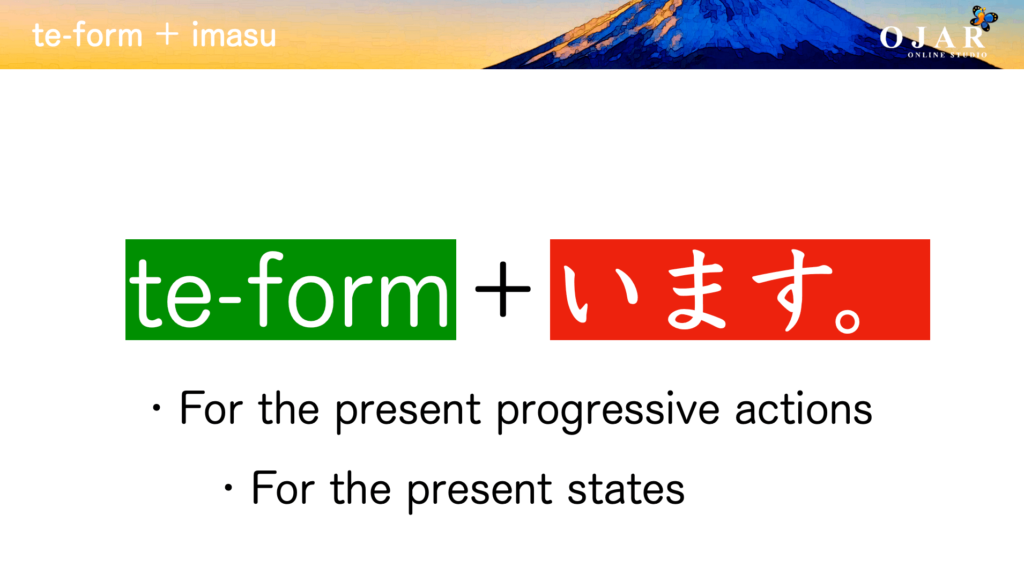
We express the present progressing actions or the present states with “te-form + imasu”.
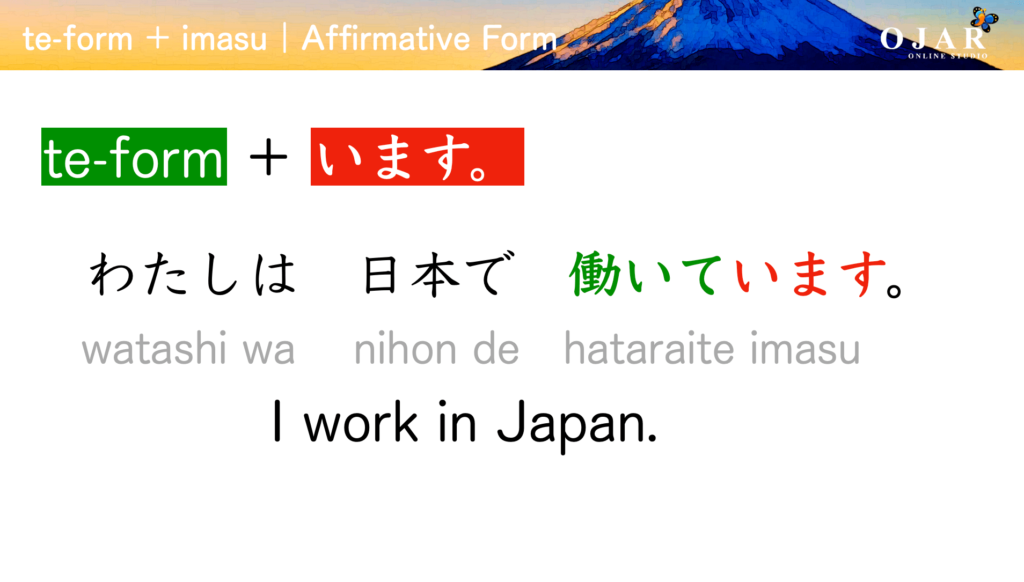
You can make an affirmative sentence by adding “te-form + います” the end of the sentence.
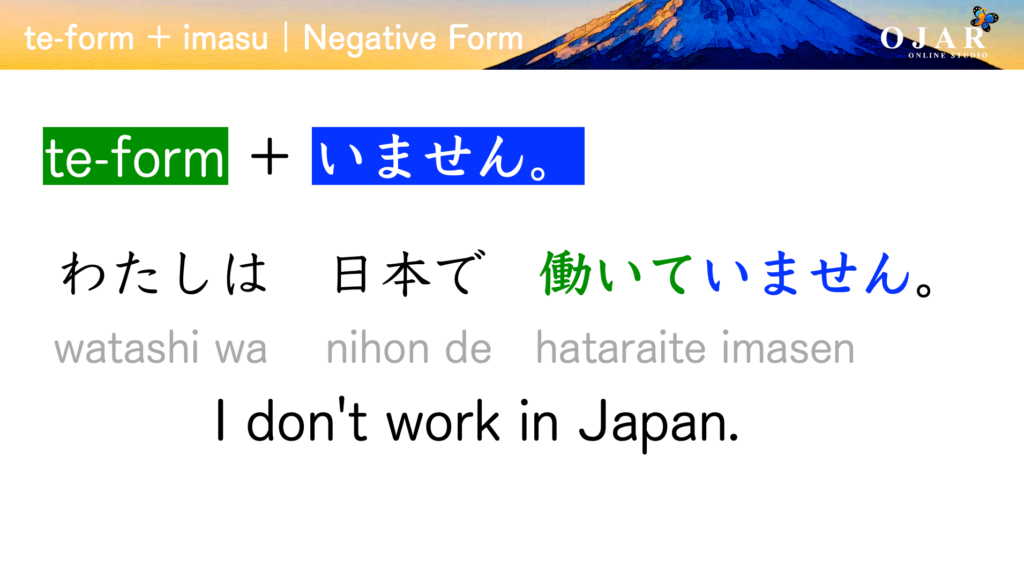
You can make a negative sentence by adding “te-form + いません” the end of the sentence.
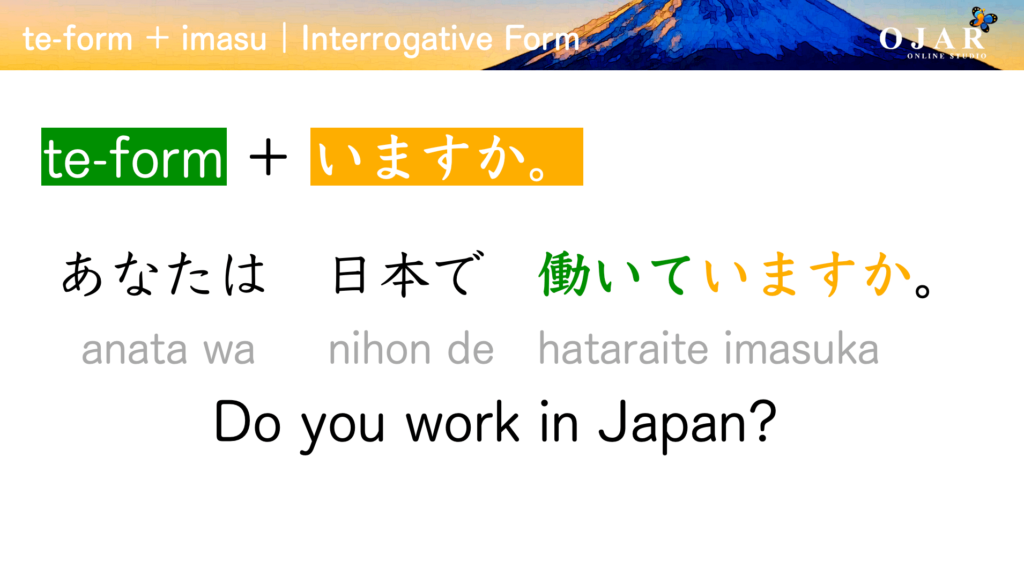
You can make an interrogative sentence by adding “te-form + いますか” the end of the sentence.
・te-form + imasu | Responses
はい、働いています。
hai hataraite imasu
Yes, I do.
いいえ、働いていません。
iie hataraite imasen
No, I don’t.
te-form + imasu | Exercise 1.
The Difference Nuances Between “- imasu” And “- masu”
What is the difference between “- imasu” and “- masu”?
“勉強しています benkyoushite imasu” and “勉強します benkyoushi msau” are totally different nuances.
When you use “- います”, you can emphasize “the HABITUAL ACTIONS” or “the PRESENT PROGRESSIVE ACTIONS”. While when you use “- ます”, you can emphasize “your ACTIONS” or “the FUTURE PLANS”.
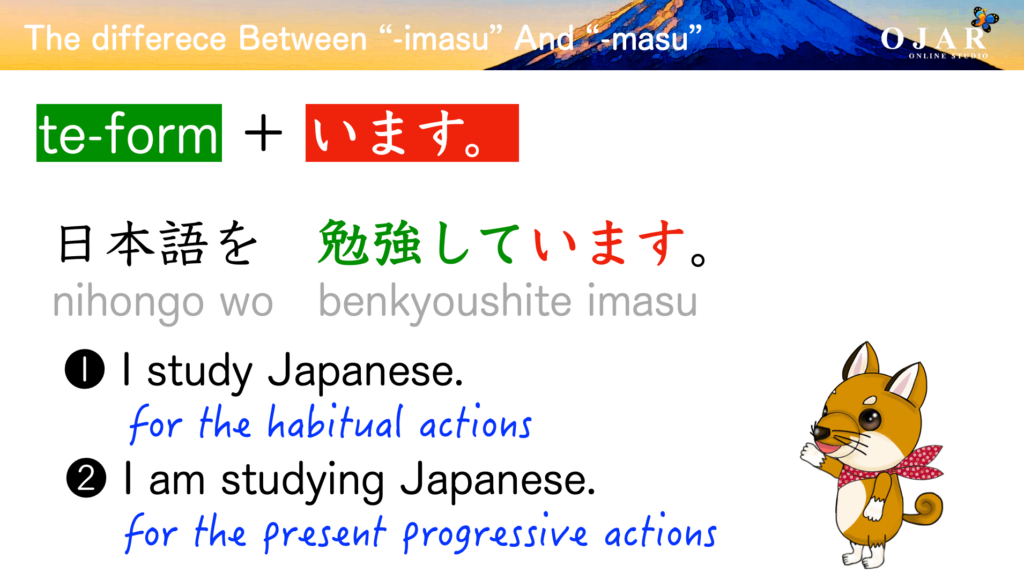
We focus on the habitual actions or the present progressive actions when we use this sentence.
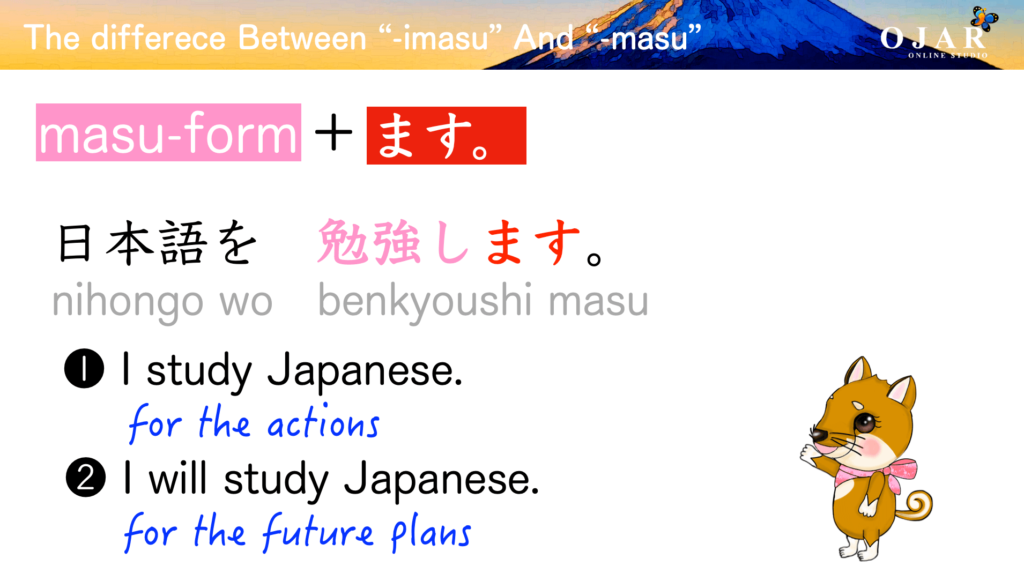
We focus on the actions or the future plans when we use this sentence.
I’m going to tell you the different nuances between various status verbs here.
| te-form + imasu | Nuances | masu-form + masu | Nuances |
|---|---|---|---|
| 住んでいます sunde imasu | I live here now. | 住みます sumi masu | I will live here. |
| 働いています hataraite imasu | I’m working now. I work. | 働きます hataraki masu | I will work. |
| 愛しています aishite imasu | I love you. | 愛します aishi masu | I will love you. |
| 結婚しています kekkonshite imasu | I’m married. | 結婚します kekkonshi masu | I’m going to get married. |
| 賛成しています sanseishite imasu | I agree now. | 賛成します sanseishi masu | I agree. |
| 反対しています hantaishite imasu | I disagree now. | 反対します hantaishi masu | I disagree. |
| 気にしています kinishite imasu | I care about it now. | 気にします kinishi masu | I will care about it. |
| 感じています kanjite imasu | I feel it now. | 感じます kanji masu | I feel it. |
| 思っています omotte imasu | I think that now. | 思います omoi masu | I think. |
| 理解している rikaishite imasu | I understand. | 理解します rikaishi masu | I will understand. |
| 信じています shinjite imasu | I believe. | 信じます shinji masu | I will believe. |
| 望んでいます nozonde imasu | I hope that now. | 望みます nozomi masu | I hope that. |
| 必要としています hitsuyoutoshite imasu | I need it now. | 必要とします hitsuyoutoshi masu | I need it. |
| 見ています mite imasu | I see it now. | 見ます mi masu | I will see it. |
| 売っています utte imasu | I sell it now. | 売ります uri masu | I will sell it. |
The Different Nuances Between “- imasen” And “- masen”
“勉強していません benkyoushite imasen” and “勉強しません benkyoushi masen” are also totally different nuances.
As I told you, When you use “- いません”, you can emphasize “the HABITUAL ACTIONS” or “the PRESENT PROGRESSIVE ACTIONS”. While when you use “- ません”, you can emphasize “the ACTIONS” or “one’s WILL”.
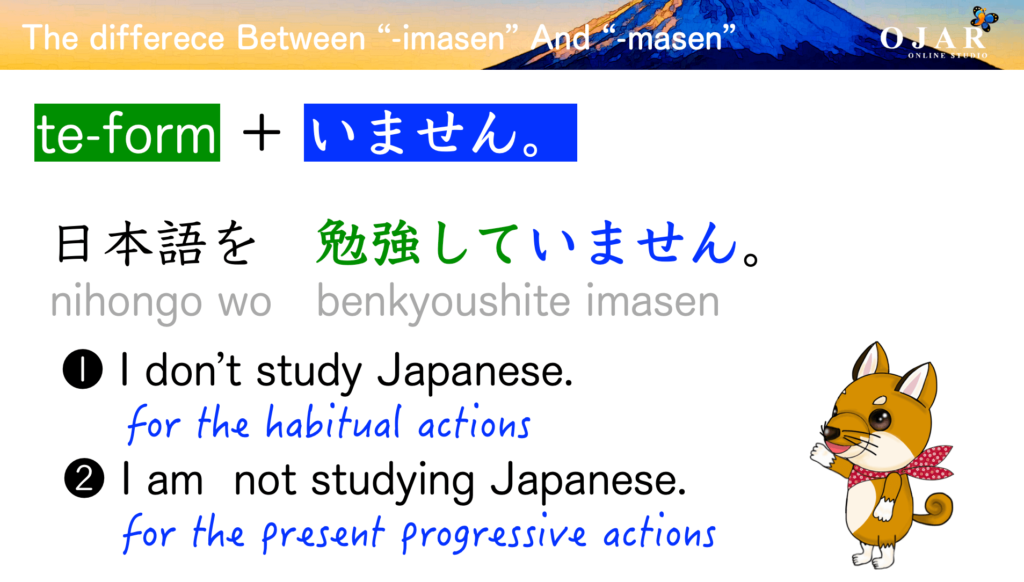
We focus on the habitual actions or the present progressive actions when we use this sentence.
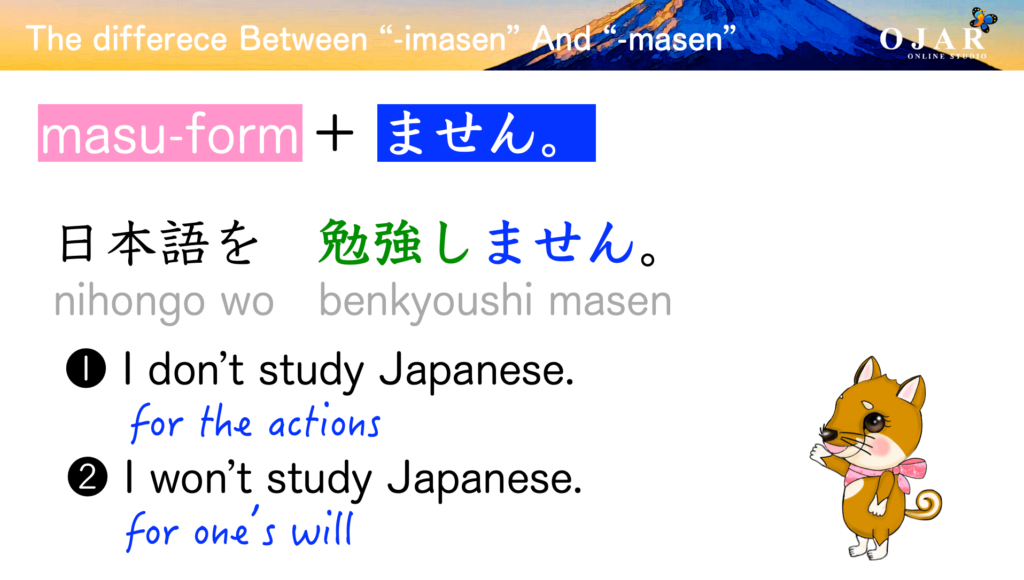
We focus on the actions or your will when we use this sentence.
I’m going to tell you the different nuances between various status verbs here.
| te-form + imasen | Nuances | masu-form + masen | Nuances |
|---|---|---|---|
| 住んでいません sunde imasen | I don’t live here now. | 住みませんsumi masen | I won’t live here. |
| 働いていません hataraite imasen | I don’t work now. I’m not working now. | 働きません hataraki masen | I won’t work. |
| 愛していません aishite imasen | I don’t love you anymore. | 愛しません aishi masen | I won’t be in love anymore. |
| 結婚していません kekkonshite imasen | I’m not married. | 結婚しません kekkonshi masen | I won’t get married. |
| 賛成していません sanseishite imasen | I don’t agree. | 賛成しません sanseishi masen | I won’t agree. |
| 反対していません hantaishite imasen | I don’t disagree. | 反対しません hantaishi masen | I won’t disagree. |
| 気にしていません kinishite imasen | I don’t care for now. | 気にしません kinishi masen | I don’t care. |
| 感じていません kanjite imasen | I don’t feel now. | 感じません kanji masen | I don’t feel. |
| 思っていません omotte imasen | I don’t think that now. | 思いません omoi masen | I don’t think that. |
| 理解していません rikaishite imasen | I don’t understand now. | 理解しませんrikaishi masen | I won’t understand. |
| 信じていません shinjite imasen | I don’t believe that for now. | 信じませんshinji masen | I don’t believe. |
| 望んでいませんnozonde imasen | I don’t hope that now. | 望みません nozomi masen | I don’t hope that. |
| 必要としていません hitsuyoutoshite imasen | I don’t need it for now. | 必要としません hitsuyoutoshi masen | I won’t need it. |
| 見ていません mite imasen | I don’t see. | 見ません mi masen | I won’t see. |
| 売っていません utte imasen | I don’t sell it now. | 売りません uri masen | I won’t sell. |
te-form + imasu | Showing Progressive Actions
We express the present progressive and habitual actions with “te-form + imasu”.
It is sometimes used in the present tense and in the present progressive form.
So how do we identify the differences?
We can distinguish the usages of “te-from + imasu” with adverbs though we use it without adverbs. It would be more ambiguous expressions if you didn’t use the adverbs.
■In the Present Progressive Form
You can use action verbs in the present progressive form.
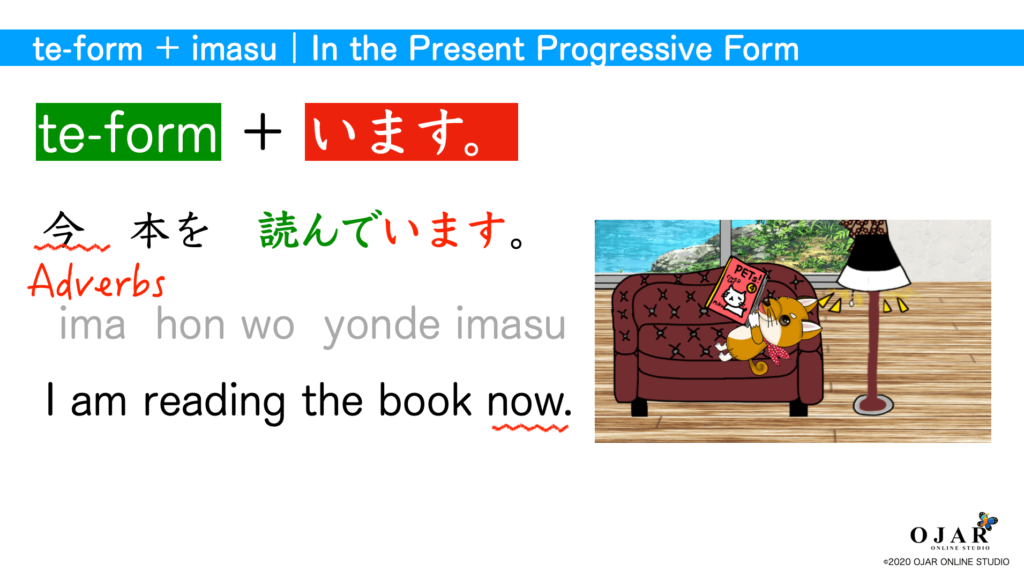
We identify it’s the present progressive form because it is used with “今”.
・Adverbs Used in the Present Progressive Form
| Japanese | English |
|---|---|
| 今 ima | now |
| 現在 genzai | currently |
| ちょうど今 choudo ima | just now |
■In the Present Tense
You can use status verbs in the present tense.
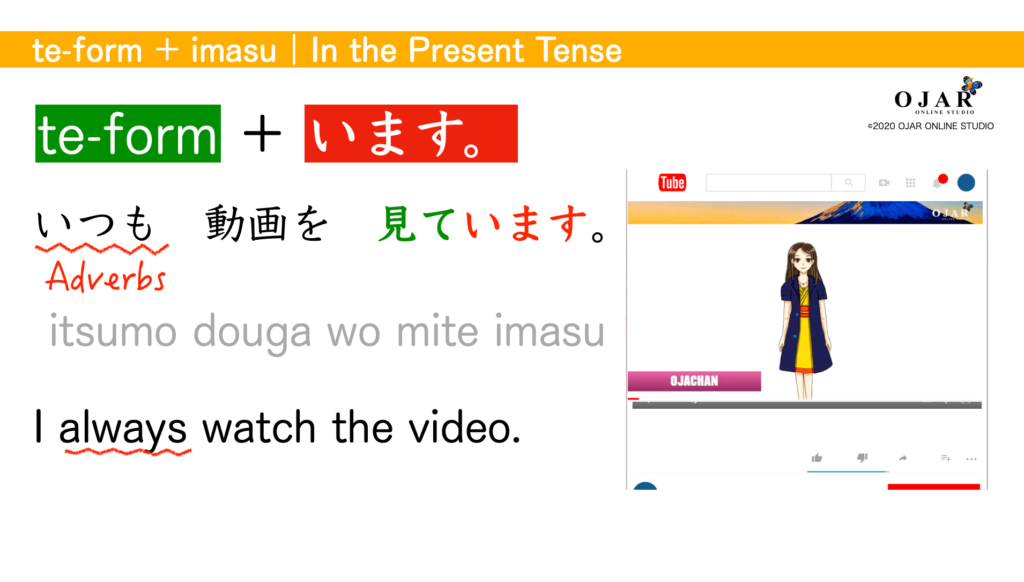
We identify it’s the present tense because it is used with “いつも”.
・Adverbs Used in the Present Tense
| Japanese | English |
|---|---|
| いつも itsumo | always |
| 頻繁に hinpanni | frequently |
| たいてい taitei | usually |
| 普段は fudanwa | generally |
| よく yoku | often |
| 時々 tokidoki | sometimes |
| 時折 tokiori | occasionally |
te-form + imasu | Exercise 2.
te-form + imasu | Showing Present States
We express the present states with “te-form + imasu”. It is only used in the present tense.
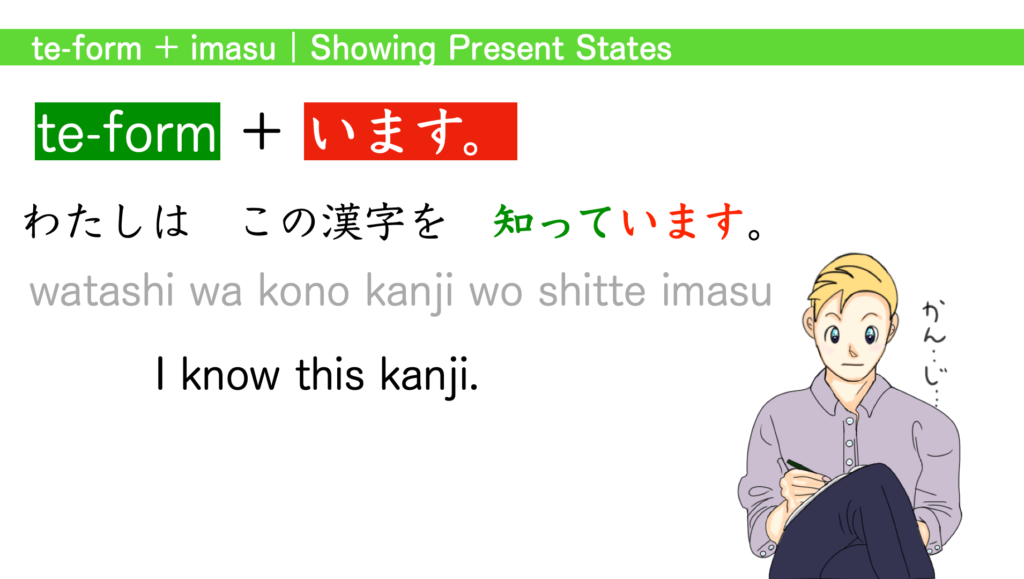
わたしは 日本に 住んでいます。
watashi wa nihon ni sunde imasu
I live in Japan.
あの 辞書を 持っています。
ano jisho wo motte imasu
I have that dictionary.
知っていません Is NOT 知っています ’s Negative Form
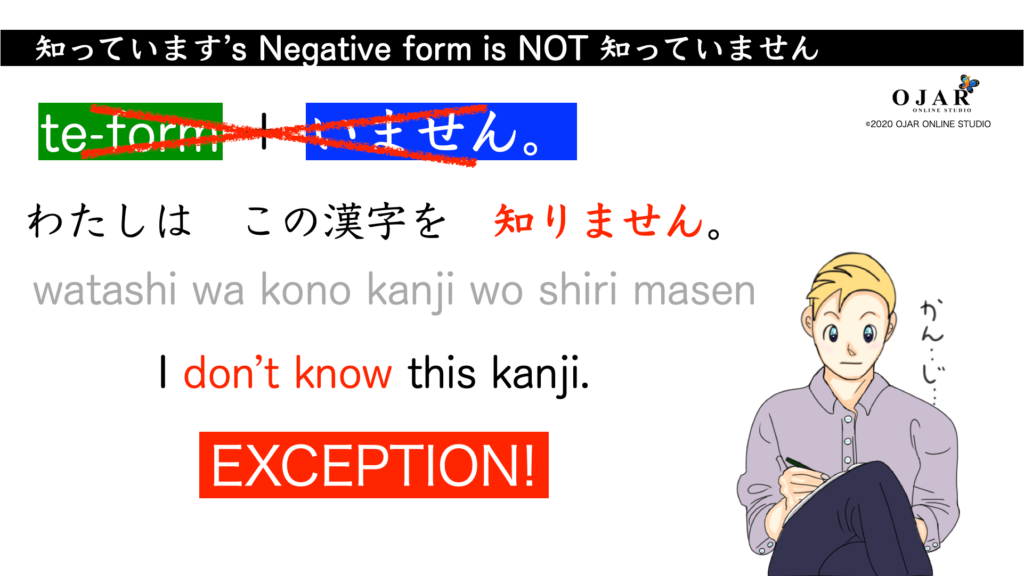
知っています’s negative form is 知りません. It’s NOT 知っていません.
Actually, we can understand 知っていません if you use this but it’s unnatural.
I think you should memorize as an EXCEPTION.
“Why?”
There are several views of this matter and it is not solved the origin for now officially.
As my opinion;
THINK 1.
There are 2 ways to say “to know” in Japanese. It’s “知る shiru” and “知っている shitteiru”. We make a clear distinction between the two verbs.
① 知る
“知る shiru” is used for the action.
We use this word when we know the information willingly or accidentally.
知る’s negative form is “知らない shiranai”.
② 知っている
“知っている shitteiru” is used for the status.
We use this word when we already know the information. In other words, we have the knowledge about it.
As I think it logically, “知っている shitteiru” negative form should be “知っていない shitteinai”. (But it’s actually unnatural!)
THINK 2.
“~ている teiru” means “to do now”.
THINK 3.
“知る” is I know that. “知らない” is I don’t know that.
知っている is I already know that. So I know that for now. 知っていない is, I try to translate it directly, I don’t know that NOW.
If you were to use 知っていない, the listener would think; “you knew that in the past but you’ve just forgot it”. It’s strange, isn’t it?
For Example;
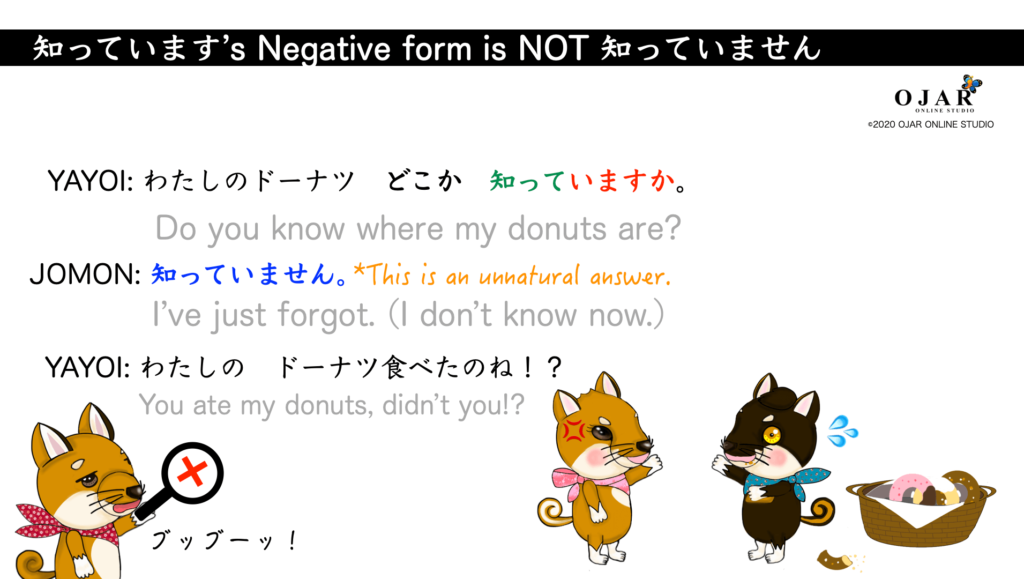
MY CONCLUSION
Since “知っていない shitteinai” assumes that you’re unaware of a certain piece of information at this moment, it’s an unsuitable word.
知らない’s masu-form is 知りません. So 知っています’s negative form is “知りません” is the best to answer.
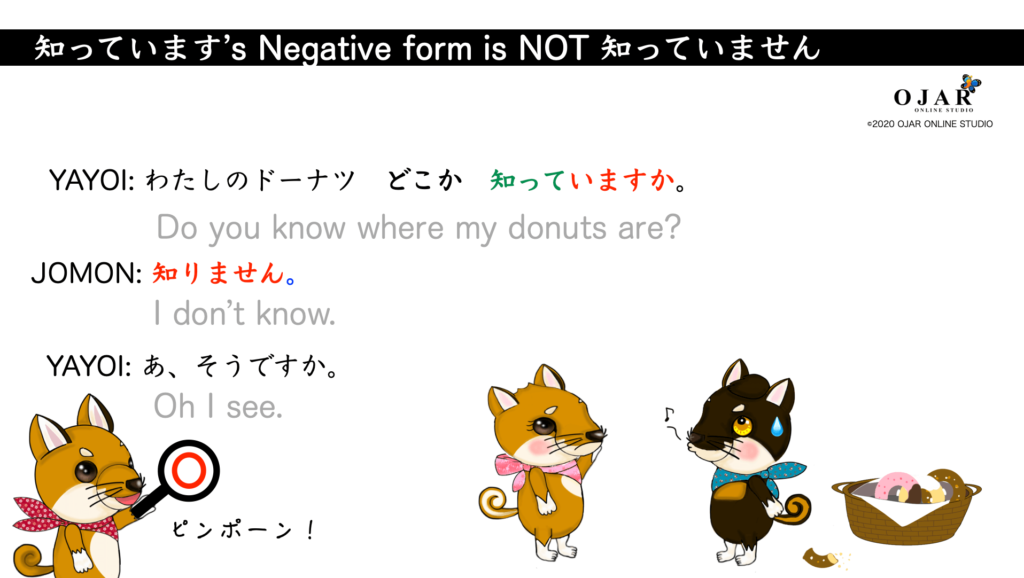
■Homework
Here is your homework today. Please translate Japanese into English and comment below.
1. わたしは 今 漢字を 練習しています。
2.わたしは いつも 電車で 学校に 行っています。
Okay, that’s all for today!
Good luck with your Japanese study 🐶🍀
Minna No Nihongo: Beginner 1, 2nd Edition (Japanese)
Customer Reviews:★★★★☆
Publisher : 3A CORPORATION; 2nd Edition (March 16, 1998)
THE NEXT LESSON is:
Minna no Nihongo 16 ①: Combining Sentences “V1 + V2 + V3”
THE PREVIOUS LESSON is:
Minna no Nihongo 15 ①: Permissions And Prohibitions

